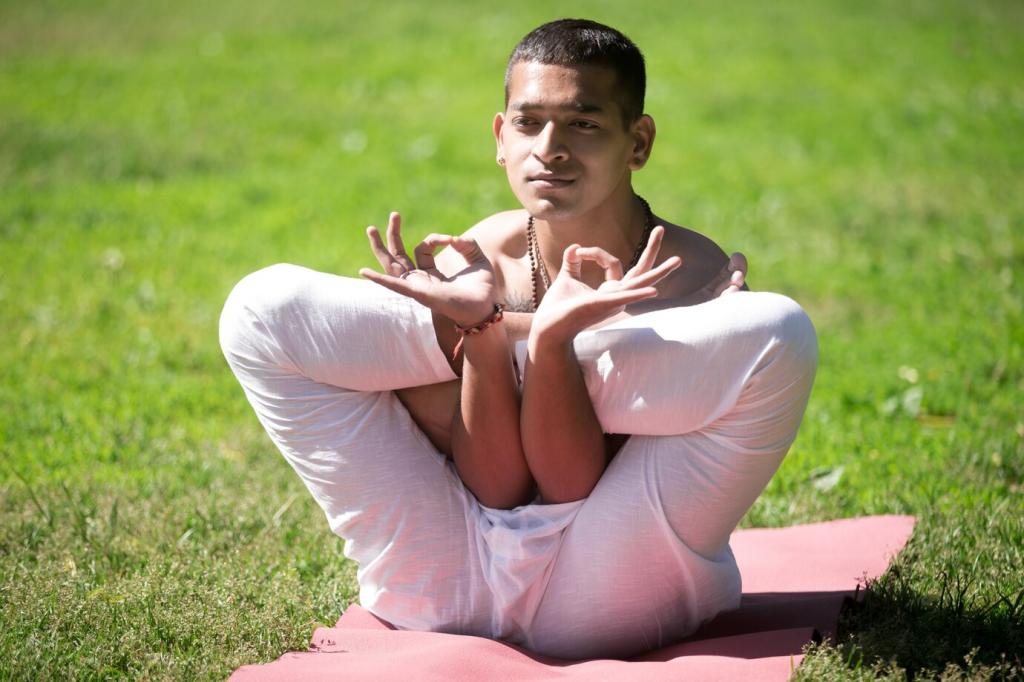Mindful Movement: Improving Fitness with Concentrated Awareness
Chosen theme: Mindful Movement: Improving Fitness with Concentrated Awareness. Welcome to a space where every rep, breath, and step becomes a practice in presence. Explore how attention sharpens technique, reduces injury, and deepens joy. Subscribe for weekly mindful drills and share your experiences to inspire our growing community.

Foundations of Mindful Movement
Breath as Your Training Metronome
Use your breath to set pace and intention: inhale to prepare, exhale to power, pause to notice. This simple cadence stabilizes core engagement, reduces rushing, and turns every movement into a deliberate act. Try it today and comment on how your tempo changes.
Body Scanning in Motion
Sweep attention from feet to crown during each repetition, noticing joint alignment, muscle activation, and unnecessary tension. This moving body scan refines technique while preventing strain. Practice for five minutes, then share one surprising area where you discovered hidden effort.
Setting Clear Intentions Before You Move
Name your intention before a session: smoother form, steadier breath, kinder self-talk. Intentions anchor attention when fatigue arrives. Write your intention in a journal, revisit it afterward, and tell us whether it reshaped your workout story today.


Applying Awareness to Everyday Exercises
Stand tall, root your feet, and feel weight spread evenly across heel, big toe, and little toe. Inhale to lengthen the spine, exhale as hips travel back, knees track over mid-foot. Notice the glutes turn on. Share your biggest alignment aha in the comments.
Applying Awareness to Everyday Exercises
During a brisk walk, sync steps with breath: three steps inhale, four steps exhale. Observe shoulder softness, jaw relaxation, and the rhythm of ground contact. This turns cardio into a moving meditation that eases stress. Invite a friend and compare experiences afterward.
The Science Behind Concentrated Awareness
Interoception—awareness of internal sensations—helps you detect subtle shifts in effort and alignment. Research links higher interoception to better regulation of intensity and form. Practice noticing heartbeat, breath depth, and muscle tone during sets, then report what cues most improved your movement quality.

A Runner’s Turn from Pain to Poise
Maya, a marathoner, swapped frantic miles for cadence awareness and softer landings. By scanning ankle stiffness and relaxing her shoulders, long-run soreness dropped markedly. She PR’d without grinding. Which cue most changes your stride? Comment so fellow runners can borrow your insight.
Desk Worker Rediscovers Energy
Leo added micro-movements every hour: three mindful breaths, one spinal roll, ten attentive calf raises. Afternoon slumps faded, and evening workouts felt smoother. Small, conscious resets mattered. Try his routine for a week, then tell us which micro-move delivered the biggest lift.
Skeptic Finds Calm Strength
Jordan dismissed mindfulness until a coach paired tempo breaths with kettlebell swings. Fewer reps, deeper focus, better power. The surprise was emotional: less frustration, more curiosity. If you’ve tried mindful reps, describe the moment you first noticed strength becoming steadier and kinder.

Designing a Mindful Training Plan
Begin and end workouts with short check-ins: pulse rate, breath pace, tension hotspots, intention status. These snapshots guide adjustments and celebrate small wins. Log them in your notes, and after a month, share trends you noticed in energy, focus, and form.
Designing a Mindful Training Plan
Pair mindful movement with existing routines: after morning coffee, perform a three-minute mobility flow; post-meetings, take a grounding walk. Clear anchors reduce decision fatigue. Choose one stack today, commit for seven days, and tell the community what made it stick.
Mindful Movement Across Modalities

Use tempos like three seconds down, one second pause, two seconds up. Feel the stretch, stabilize at the bottom, drive smoothly. This protects joints and deepens muscle engagement. Try one tempo set per exercise and report how your control and pump changed.
